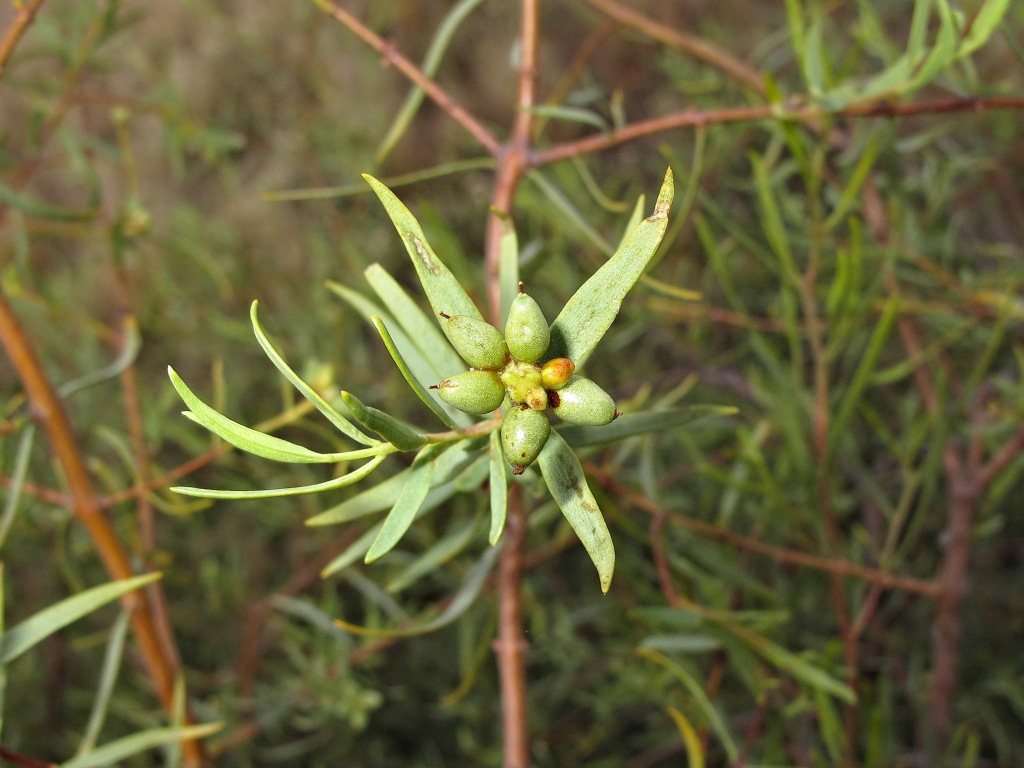Pimelea microcephala subsp. microcephala
Mallee Rice-flowerShrub usually 0.7–2(–4) m high; stems glabrous. Leaves opposite, shortly petiolate, more or less narrowly elliptic, 4–40(–60) mm long, 1–7 mm wide, concolorous, glabrous. Inflorescence terminal, a compact head of few–many flowers; involucral bracts leaf-like, 2 or 4, sessile, narrowly elliptic to ovate-elliptic, 2–30 mm long, 1–7 mm wide, usually deciduous, glabrous, green. Flowers unisexual, white to yellow or greenish, glabrous inside, densely hairy outside; floral tube in male flowers 3–7 mm long, in female flowers 1.5–2.5 mm long and style-portion shorter than ovary-portion; sepals 0.2–2 mm long; pedicel hairy; stamens shorter than sepals; anthers opening laterally or somewhat laterally. Fruit succulent, naked. Flowers Apr.–Sep.
LoM, MuM, VRiv, MSB, RobP, MuF. Also WA, NT, SA, Qld, NSW. Grows in shrubland or woodland in north-west of State, usually in sand.
Subsp. microcephala differs from subsp. glabra, a South Australian endemic, in having medium green, rather than glaucous leaves, and flowers with densely hairy pedicel and floral tube.
Taller plants are found near water. The fruits were reportedly eaten by some Aboriginal people of South Australia, but the seeds are poisonous.
Entwisle, T.J. (1996). Thymelaeaceae. In: Walsh, N.G.; Entwisle, T.J., Flora of Victoria Vol. 3, Dicotyledons Winteraceae to Myrtaceae, pp. 912–930. Inkata Press, Melbourne.
 Spinning
Spinning


